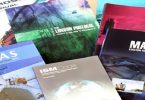-
Time Base Unit
With an analogue radar, a motor rotates the scanner at approximately 24 rpm and a signal from the time base unit to the display unit causes the trace to rotate in synchronisation with the scanner. As the scanner passes the fore-and-aft line, a heading marker will appear on the display. Digital radars use microprocessors to add heading and timebase information to the display.
-
Receiver
The receiver unit detects incoming echoes which are at more or less the same frequency as the outgoing frequency and mixes them with a signal from the local oscillator to reduce them to an intermediate frequency, usually about 60MHz. The signal is then amplified by the IF amplifier, weaker distant targets are amplified more than stronger/closer targets and is passed to the video amplifier, which converts the signal to a suitable form for video display. The signals are then passed on to the display unit, with the addition of range and bearing marker signals. The receiver in modern radars is combined with the transmitter and called the transceiver. It is usually located within the scanner unit.


